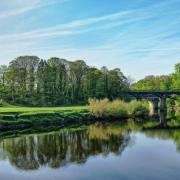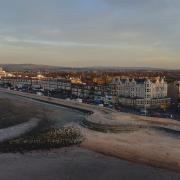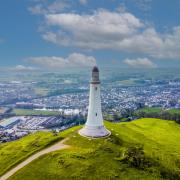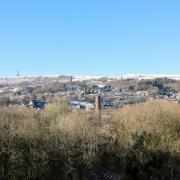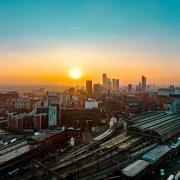This thriving little town offers something for everyone and is a great place for a family day out

Canal
Burscough owes its existence to the Leeds-Liverpool Canal. It was just a few scattered homes among the fields until 1774 when the men with spades arrived, carving a link between two of the north’s greatest cities. Houses were built, shops were created to serve the growing population and pubs opened to serve the weary travellers. The canal dominated activity here for decades – there were stables for the horses, a veterinary hospital at the wharf and it was a vital trade link. And this stretch of the 127-mile long canal continues to be a big attraction for walkers, cyclists, birdwatchers and people with boats.

Horses
The horses who plodded along the tow path weren’t Burscough’s only equine visitors. During World War One, thousands of horses from around the world arrived at Liverpool’s Canada Dock from where they were taken to Lathom Park, just south of Burscough where they were trained for service. The story of Joey the War Horse was written by Michael Morpurgo and has become a popular film and stage show, and you can walk in the hoofprints of Joey’s comrades on a circular route. The eight and a half mile loop – mainly on level footpaths and quiet lanes – leads from Ormskirk station, where the horses were brought from Liverpool, to Lathom Park where more than 200,000 horses and mules spent time before they were sent to reserve depots around the country or to northern France where they were used in the cavalry in the early years of the war, or put to work pulling gun carriages and wagons.

Martin Mere
Martin Mere was formed at the end of the last Ice Age and was the largest body of fresh water in England until it was drained to create farmland. Much of the site has now been flooded again to create the Martin Mere reserve, although the water levels are now carefully controlled. Some historians have suggested that Martin Mere was originally Merlin Mere and that this was where the Lady of the Lake presented King Arthur with his sword. And although she hasn’t been seen for quite a while there is still plenty to spot at the mere. In late 1974 Martin Mere opened as a Wildfowl and Wetlands Trust reserve and as it nears its 50th anniversary, it is one of the county’s favourite destinations – especially for pink-footed geese and whooper swans. There are lots of permanent residents, but the real attractions are the many thousands of migrating birds who stop off here every year.

Shop
Burscough Wharf has been an integral part of life in Burscough since the canal arrived, and while the waterway’s importance for trade has dwindled, the wharf has been re-born. It opened in 2011 with a delightful selection of small independent shops and cafes. The line-up has changed a bit since then, but it remains a vibrant and popular spot whether you want food, drink, yoga, a new hairdo, a sewing masterclass or plenty more. It’s open all week and has also been a venue for events, performances and entertainment. There are more shops in the town centre, with independent retailers, boutiques and a Booths supermarket all within easy walking distance. There’s plenty of pubs and cafes, too, so you’re unlikely to go hungry.

What’s nearby
Burscough is a well-connected place, standing on the A59 and with regular rail connections to Bolton, Southport and Preston, as well as the canal and numerous footpaths and cycle routes. And while that’s great for getting to the town, it’s also handy for nipping out to see what’s nearby, and there is plenty to explore. Rufford Old Hall is just up the road – owned by the National Trust since 1936, it was home to generations of the Hesketh family and William Shakespeare is said to have stayed there. Windmill Farm, a mile or so north of the town centre, is always popular with young visitors who enjoy getting close to the animals and riding the train.














